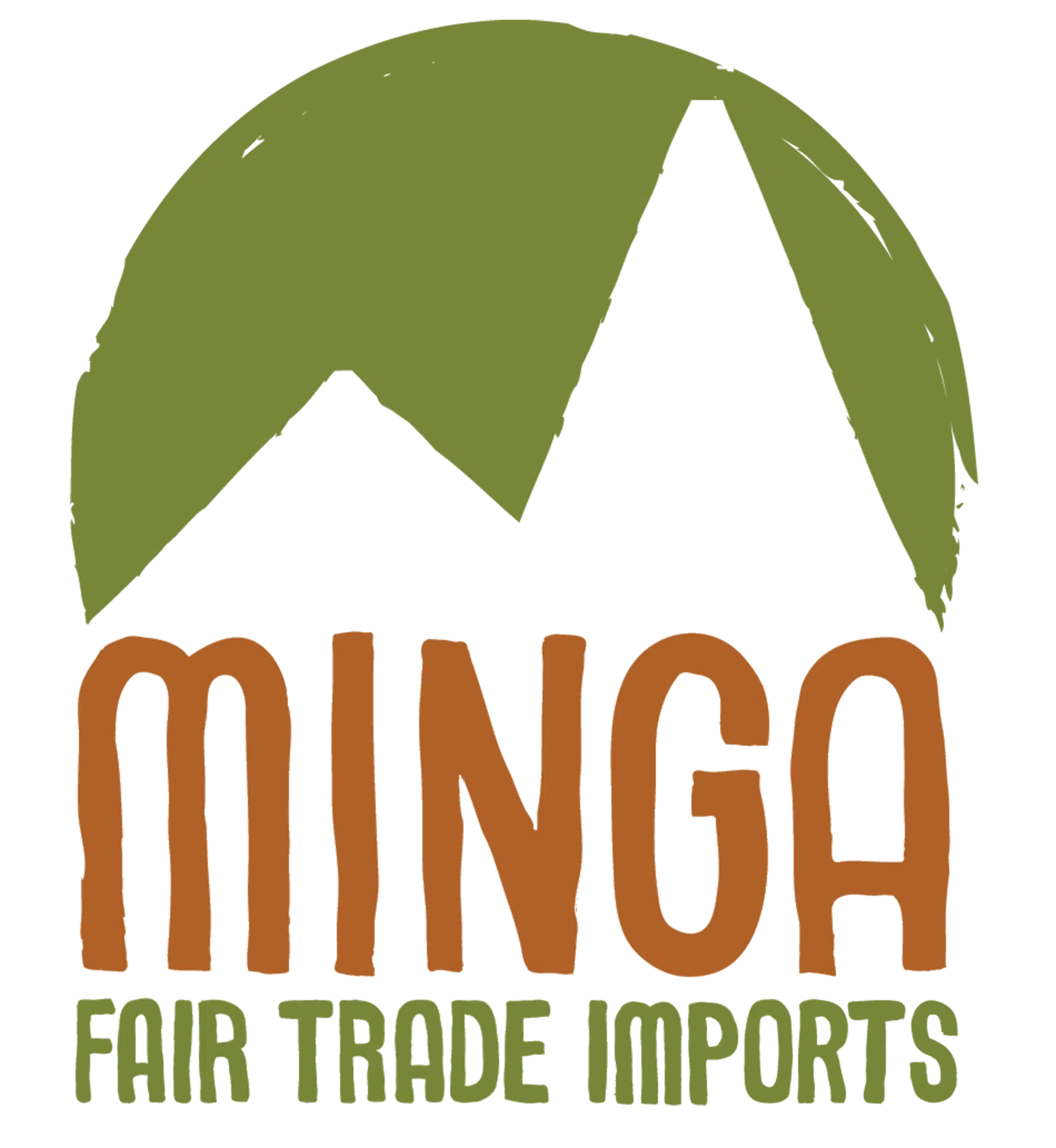Héctor and his smiling wife, Estela, live on the outskirts of Peguche. They met 14 years ago at a party for the godparents of a friend. They got married a month later on Estela’s mother’s birthday. Her mother was very ill with cancer and died just six weeks later. They were so glad they had been able to combine her special day with theirs. Hector and Estela get along well, and are very happily married. When times get tough, they “tickle each other” out of bad moods. They have two children, Stalin (12) and Amalí (6).
Hector has been learning to weave since he was 7 years old. His father, José, taught him when his arms were long enough to reach the heddle. They wove ponchos on a wooden loom. They also knitted wool sweaters and jackets, but they didn’t like how fickle the fashion market was, changing so quickly when they still had a full stock of the older fashions.
He now has two electric looms. One was built in the U.S. in 1945. Hector describes it as “delicate.” When parts wear out, they have to cast and machine new ones. The other is newer, made in Spain, and of much higher quality. It has a lifetime guarantee, so it is much sturdier than the older one. He bought this machine with a loan from the bank when they got married.
Héctor started making blankets in 2002. He made 20 of them at first to see how they would do in the market. He sold all of them in the first week, then 50 of them, and it grew from there. At first, they were the only ones to offer blankets in the market. Then more competitors entered the market with lower quality and lowered the price. Now he is offering to his clients the higher quality blankets at the market’s price, “in order not to lose clients.” Nearly all of his work is for export. He prides himself on giving the customer the designs and the quality they want. If he makes a mistake on an order, he wants to be very sure that he never repeats it. For Héctor, keeping customers satisfied is of paramount importance. Sometimes when he has orders from several customers at once, they will work all night to fill the orders on time.
He has been working with Minga for two years. He and his wife take no salary from their company, and he feels he should be paying his workers more, however, the constraints of the market have stymied him. One further restriction is that he has to buy his yarn from retailers in the area. He could buy it for much less at the factory, but he cannot afford to buy in the quantities they require.
Hector and Estela also make acrylic scarves, though they have made alpaca ones in the past. They make acrylic now because of customer preference. They are softer and warmer, and the customers complained about the prickliness of alpaca wool. Héctor says to tell the difference, take a few threads from the article and burn them; there will be mostly ash left and a smell of burnt wool if it’s made from alpaca. There is a rubbery substance left and a smell of burnt plastic with acrylic.
On the big loom, they can make 250 scarves per day, on the smaller one, 50. The designs are brushed after the weaving with a roller machine containing several sets of rollers with fine metal teeth. Before the machine, they used to brush the fabric with teasel heads—you’ve seen them in vacant lots: dried heads of a prickly weed. It wasn’t even possible to brush the blankets that way because they are so large the time it would take would be prohibitive, so they bought a used machine to do the job. Brushing makes the fabric even warmer because the weave traps more air against the skin.
Héctor’s process begins first by winding yarn on to a very large spool surrounded by spools of yarn in the colors of the blanket. It is turned by hand—about 7 feet high and six feet in diameter. First the darker colors are wound, then the lighter ones. This takes a day. He says that you have to do this by feel, because your hand has to move before you can actually see where the yarn is going. The turner has to know the pattern in his head so that the spooled yarn (which will become the warp thread for 70 blankets) will match the design throughout the entire length of the warp.
The warp is then threaded onto one of the electric looms and woven into cloth. Then the cloth goes through the brushing machine, the edges are stitched (to prevent unraveling), and the blankets are ironed to give them a smooth finish.
Héctor and Estela have faced many challenges. They define success as keeping their clients and continuing to get orders. They would love to increase their range of products to give them a little bit more stability in the market. They have achieved their dream of buying land and are now hoping to someday build a small house. They do not want their children to be shuttling from house to house any more. They want to give them a real home.

